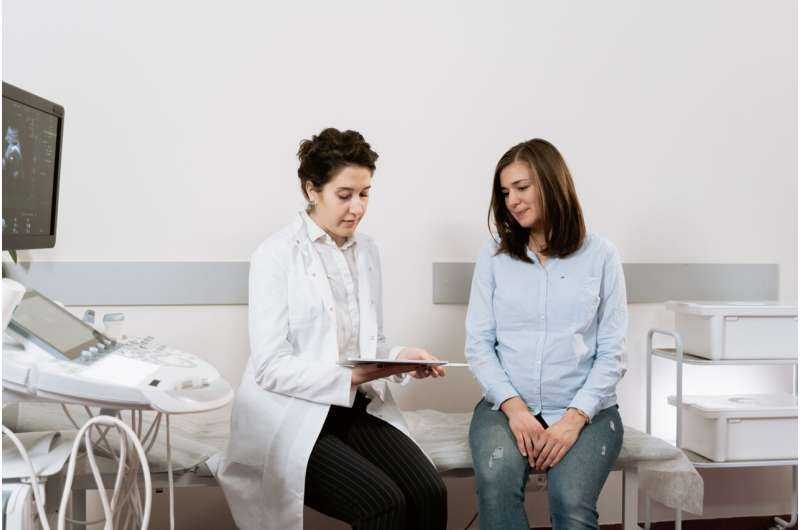This article has been reviewed according to Science X's editorial process and policies. Editors have highlighted the following attributes while ensuring the content's credibility:
fact-checked
trusted source
proofread
Risk of adverse pre-eclampsia outcomes accurately identified through new AI model

A potentially lifesaving model for identifying maternal risk in pregnant women with pre-eclampsia has been developed by researchers.
More than 8,800 women in 11 countries took part in the study, which accurately classified women's risk of adverse outcomes of the blood pressure condition in five categories, ranging from very low to very high, within two days of their first assessment.
Pre-eclampsia occurs in between 2% and 4% of pregnancies and is a leading global cause of maternal morbidity and mortality. It causes an estimated 46,000 maternal deaths, and half a million stillbirths and newborn deaths a year, nearly all occurring in low- and middle-income countries.
The majority of the pregnant women who develop pre-eclampsia have mild disease which ends soon after they give birth. However, about 1 in 10 of these women in the U.K. experience life-threatening or life-changing complications, such as stroke.
The new risk-prediction model has been designed to be used internationally and its operation is based on machine learning, a form of AI.
The researchers from the University of Strathclyde in Glasgow, and King's College London now aim to develop an app for determining an individual woman's risk of suffering adverse outcomes of pre-eclampsia after they are diagnosed.
The model, named PIERS-ML (Pre-eclampsia Integrated Estimate of Risk—Machine Learning), consolidates two previous versions of the model. The research paper has been published in The Lancet Digital Health.
Tunde Csobán, a Research Assistant in Strathclyde's Department of Mathematics and Statistics, the lead author of the paper, said, "Pre-eclampsia presents considerable, often fatal, risks to women and their children. There is an urgent need for an effective means of assessing these risks, so that they can be managed and support can be offered."
Dr. Kimberley Kavanagh, Senior Lecturer in Strathclyde's Department of Mathematics and Statistics and a co-author of the paper, said, "The model we have developed has been rigorously tested and shown to deliver fast, precise predictions of the risks, in a way which can be adapted to the individual circumstances of women around the world.
"We hope to make it available on an app which can be used in clinical settings—and potentially save many lives."
The project's Principal Investigator, Professor Peter von Dadelszen, Professor of Global Women's Health, King's College London, said, "The longer a woman remains pregnant, generally the better the outcome is for the baby but in pre-eclampsia, the placental problems that are underlying the process are getting worse.
"We started developing a model that would objectively measure the risks of pre-eclampsia in 2001. We have now taken the data we obtained from the previous versions, fullPIERS and miniPIERS, and came up with the machine learning approach that produced the best model."
"One of the innovative things we have done with the modeling is to include the countries' GDPs and their national maternal mortality ratios. Including these variables means that the model automatically adjusts according to where a woman is living and makes it a globally relevant model. This is a very important research paper and is probably the most generalizable model there is for pre-eclampsia. It's fantastic to see how well it works."
The study recruited 8,843 women from 53 maternity units in 11 low-income, middle-income countries, and high-income countries: Brazil; Fiji; Pakistan; South Africa; Uganda; Australia; Canada; Finland; New Zealand; the UK and the US. The maternal risk categories were defined as very low, low, moderate, high or very high.
The records of a further 2,901 women from South-East England were used for an externally validation exercise for the model, which confirmed the performance of the main study.
More information: Tünde Montgomery-Csobán et al, Machine learning-enabled maternal risk assessment for women with pre-eclampsia (the PIERS-ML model): a modelling study, The Lancet Digital Health (2024). DOI: 10.1016/S2589-7500(23)00267-4


















